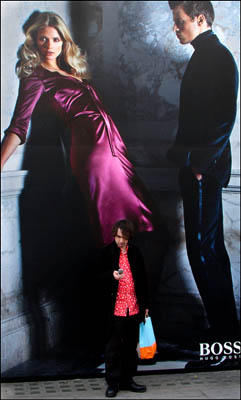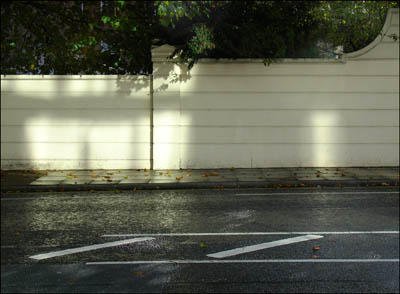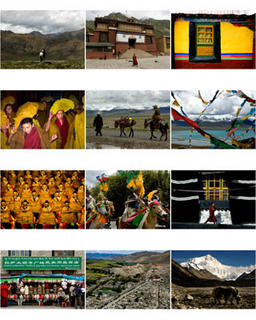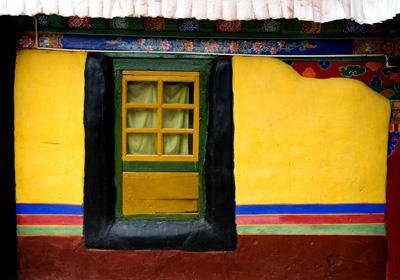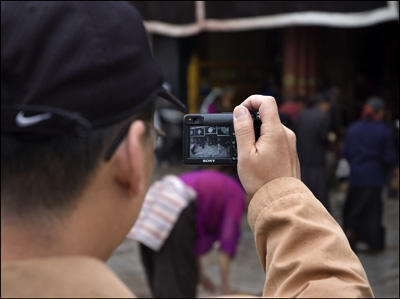Nikon D200, viral marketing and Zen
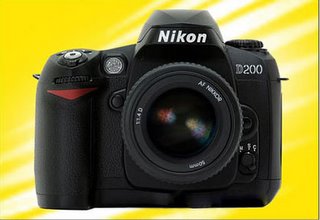 This week is a big week in Nikonland. At the last the D200 looks like it will finally arrive. For most of the year Nikon has benefited from (orchestrated?) a viral marketing campaign par excellance. In the discussion forums of the major photography sites (for example dpreview and Nikonians) there has been constant chatter and speculation: what will it look like, what specification, what price and so on. Fantasy wish lists and endless rumours from people who have seen it, spoken to people who seen it, had word from a friend who knows somebody who may have seen a prototype, or simply just stuff made up. Occasionally a fake picture of varying quality surfaces on the web and is immediately cross posted fuelling yet more speculation. Statements from Nikon employees are deconstructed and release dates imagined. Finally, Nikon resort to the old trick of ‘accidentally’ posting photos of the new camera on their web site for a couple of hours. The second coming would generate less hype and emotion than this. People have paid money to dealers as a pre order for a camera with an unknown specification. Part of this is pure commodity fetishism as it is unlikely that the D200 will in most circumstances enable the frantic consumer to take better pictures than they do already; but something else is also going on here.
This week is a big week in Nikonland. At the last the D200 looks like it will finally arrive. For most of the year Nikon has benefited from (orchestrated?) a viral marketing campaign par excellance. In the discussion forums of the major photography sites (for example dpreview and Nikonians) there has been constant chatter and speculation: what will it look like, what specification, what price and so on. Fantasy wish lists and endless rumours from people who have seen it, spoken to people who seen it, had word from a friend who knows somebody who may have seen a prototype, or simply just stuff made up. Occasionally a fake picture of varying quality surfaces on the web and is immediately cross posted fuelling yet more speculation. Statements from Nikon employees are deconstructed and release dates imagined. Finally, Nikon resort to the old trick of ‘accidentally’ posting photos of the new camera on their web site for a couple of hours. The second coming would generate less hype and emotion than this. People have paid money to dealers as a pre order for a camera with an unknown specification. Part of this is pure commodity fetishism as it is unlikely that the D200 will in most circumstances enable the frantic consumer to take better pictures than they do already; but something else is also going on here.Photographers are often emotionally attached to their cameras. This is not as strange as may be thought. Herrigel in Zen and the Art of Archery makes the point that to be a successful archer the mind, eye, hand, bow, arrow and target need to become one. Furthermore, the arrow needs to release itself at what might be called the decisive moment. The equipment is carefully selected (it has to be a bow that feels right for you). Through this process the equipment you use becomes and an extension of yourself. The same is true for photography. Even basic text books tell you to practice using the camera until you can change the settings instinctively. Leica cameras are good because the viewfinder allows you to see the world as if the camera was not there. Buying the D200 is an emotional act because the camera mediates the individuals exploration of, and interaction with, the world. This has added intensity as owning and using this camera also contributes to self identify and self esteem. But as many posters in the fora have commented, in travelling down this road we seen to have lost sight of the purpose of making photographs.
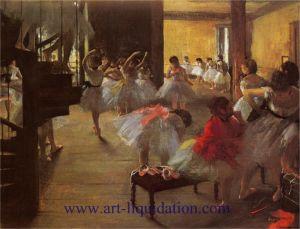 Friday at the Degas exhibition in London. A young woman, maybe 14 or 15, is making her own collection of Degas picture on her mobile phone. Good stuff, but then what does she do with it? Sitting on the tube suddenly needing to look at a Degas? Making poor quality reproductions? At the same time a number of people were walking around with little handhelds containing information about the exhibition. Standing in front of these luminescent paintings but instead looking at a 2 x 3 inch screen. Walter Benjamin thought that paintings used to have an ‘aura’ that gave them their emotional power. But in what he called the ‘age of mechanical reproduction’ this power has been lost. The Tate Gallery itself helps to undermine this effect by reproducing art as mugs and fridge magnets. But we have lost the habit of looking directly at art. So when we see the Degas paintings live they have an impact that is surprising and intense. It’s a pity therefore that this opportunity is thrown away by the need to stare at digital screens.
Friday at the Degas exhibition in London. A young woman, maybe 14 or 15, is making her own collection of Degas picture on her mobile phone. Good stuff, but then what does she do with it? Sitting on the tube suddenly needing to look at a Degas? Making poor quality reproductions? At the same time a number of people were walking around with little handhelds containing information about the exhibition. Standing in front of these luminescent paintings but instead looking at a 2 x 3 inch screen. Walter Benjamin thought that paintings used to have an ‘aura’ that gave them their emotional power. But in what he called the ‘age of mechanical reproduction’ this power has been lost. The Tate Gallery itself helps to undermine this effect by reproducing art as mugs and fridge magnets. But we have lost the habit of looking directly at art. So when we see the Degas paintings live they have an impact that is surprising and intense. It’s a pity therefore that this opportunity is thrown away by the need to stare at digital screens.